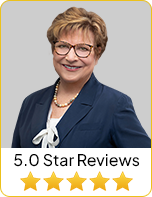
In this article, you can discover…
- How to prove professional negligence, and what evidence to gather.
- Whether expert testimony may be helpful in your case.
- How an attorney can help you prepare emotionally and practically for your case.
What Are Key Elements Required To Prove Professional Negligence In California?
In order to prove professional negligence, also known as malpractice in California, four key elements must be presented and established in a case:
- Duty: The professional owed a duty of care. This is typically established when a client seeks their services, whether it be a doctor treating a patient or an architect designing a building.
- Breach: The professional must also have failed to meet the standard of care set by their industry. This must be proven by expert testimony from another professional in the same field.
- Causation: The breach the professional is accused of having committed must have directly caused harm to the client. There must be a clear link between the professional’s actions and the damage suffered.
- Damages: The client must also demonstrate measurable harm, whether financial loss, physical injury, or other negative consequences resulting from the negligence.
What Is The Standard Of Care For Professionals In California, And How Does It Affect My Case?
The standard of care for professionals in California is based on what a reasonable practitioner in the same field and community would be expected to do under similar circumstances. This standard varies depending on factors such as location, level of expertise, and advancements in the field.
For example, a rural doctor may be held to a different standard than a chief surgeon at a major hospital. Similarly, attorneys are now expected to stay up to date with legal precedents due to the accessibility of information online. The standard evolves over time as industry practices and resources change.
In a professional negligence case, expert testimony is vital to establish whether the standard of care was breached. A qualified expert in the same field will testify on what a competent professional should have done and whether the defendant’s actions fell below that threshold.
How Can I Gather Evidence To Prove Professional Negligence?
The type of evidence you’ll need to prove professional negligence depends on the specific profession in question. However, in all cases, thorough documentation is essential. This includes emails, text messages, written notes, contracts, reports, and any other records related to the professional relationship.
Because most people don’t anticipate a dispute, they may not think about collecting every detail while receiving services. However, key evidence includes what the professional told you, what expectations were set, and any assurances given about qualifications or potential outcomes. If you suspect negligence, gathering this information as soon as possible is an essential aspect of building your case.
Is Expert Testimony Necessary To Help Prove Negligence In Professional Liability Cases?
When considering how to prove a professional was negligent In California, expert testimony is generally required, but there are exceptions. When an error is so obvious that a layperson can recognize it—such as a surgeon amputating the wrong limb or a lawyer missing a critical deadline—an expert may not be needed.
However, in most cases, proving that a professional failed to meet the standard of care requires an expert in the same field to testify. This expert explains what the standard is and how the professional’s actions fell below it. Without expert testimony, it may be difficult to establish negligence in complex cases.
What’s The Most Difficult Part Of Proving Negligence?
One of the biggest challenges in proving professional negligence is the emotional toll on the client. Many victims feel betrayed, especially if they trusted the professional who failed them. This emotional weight must be balanced against the actual damages suffered—such as financial losses, missed opportunities, or medical costs.
Plaintiffs need more than just a sense of injustice to build a strong case; they must prove measurable harm. Lawyers will assess whether the cost and effort of pursuing a claim are justified by the damages suffered. While emotional distress is valid, hard evidence—such as lost earnings, repair costs, or other quantifiable losses—is crucial to making a strong case.
How Do You Balance The Technical Legal Requirements With Client Emotions And Expectations?
Handling professional negligence cases requires both empathy and precision. First, I make it a point to intently listen to my client, allowing them to fully express their frustration, disappointment, and pain. Many feel deeply betrayed and need to be heard before discussing the legal aspects of their case.
Once their emotions are acknowledged, I shift my focus to proving damages. This involves quantifying losses—financial costs, lost opportunities, or medical expenses. Emotions are undoubtedly valid, but cases ultimately hinge on tangible proof.
Still Have Questions? Ready To Get Started?
For more information on How To Prove A Professional Was Negligent In California, an initial consultation is your next best step. Get the information and legal answers you are seeking by calling (916) 777-0943 today.
